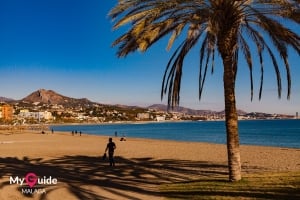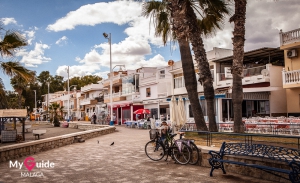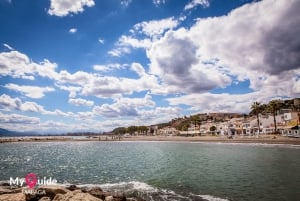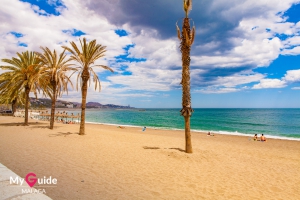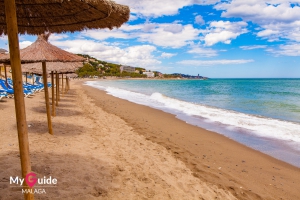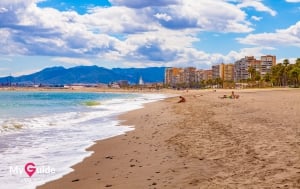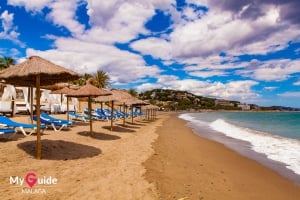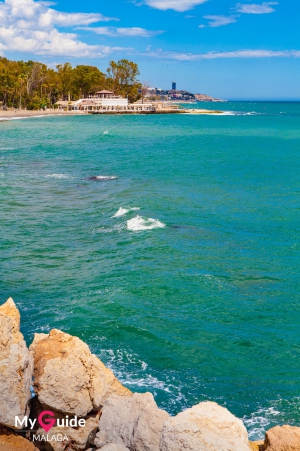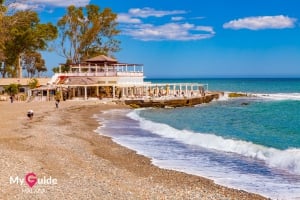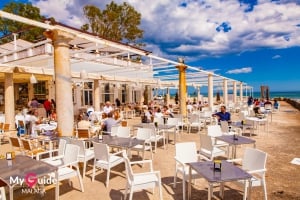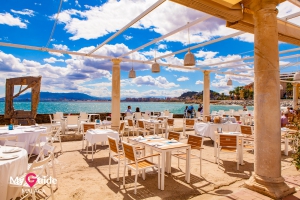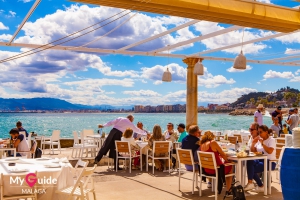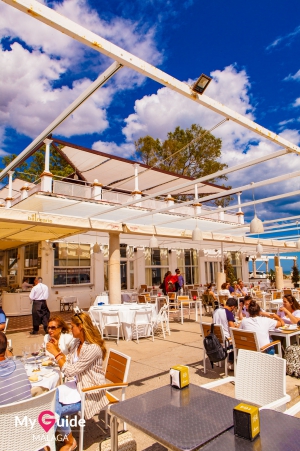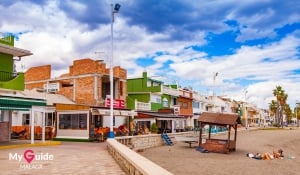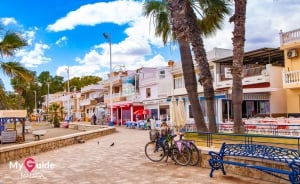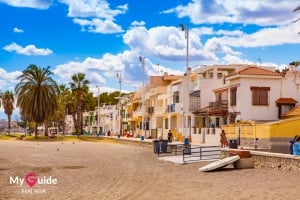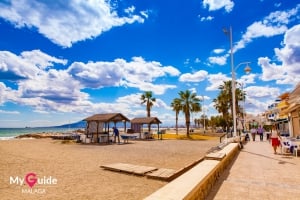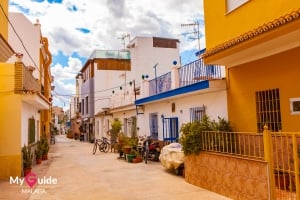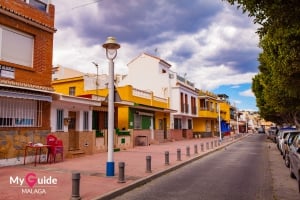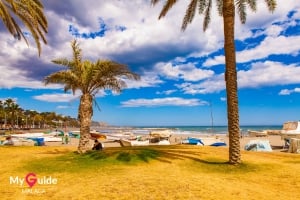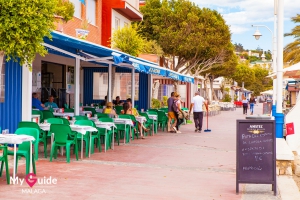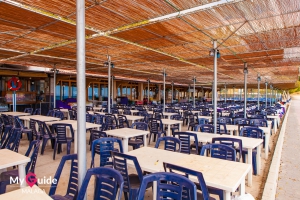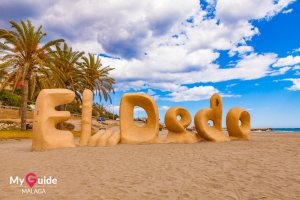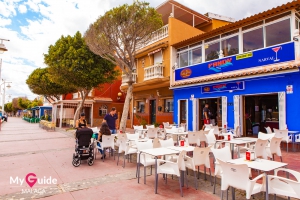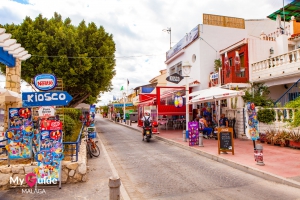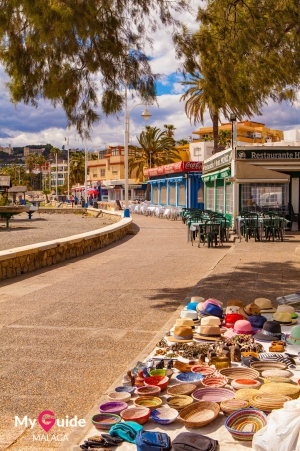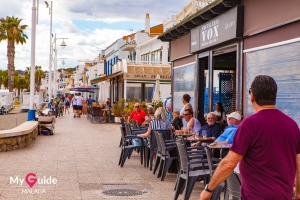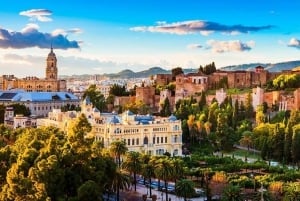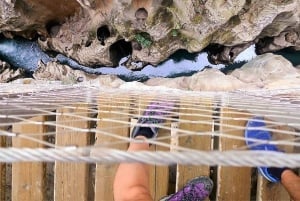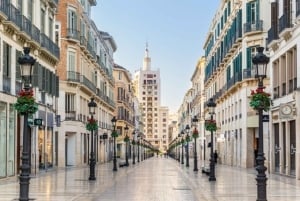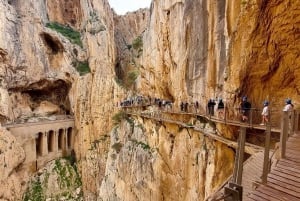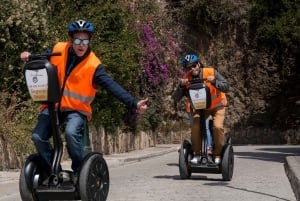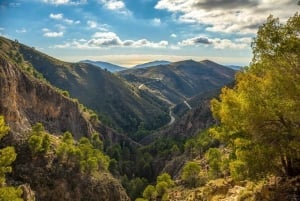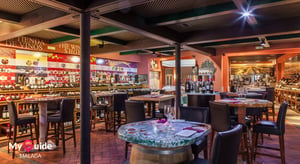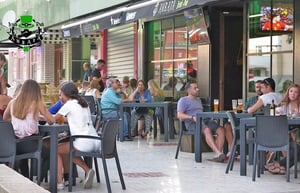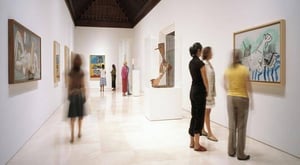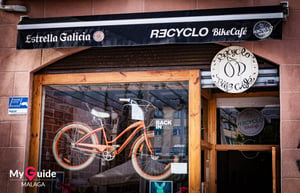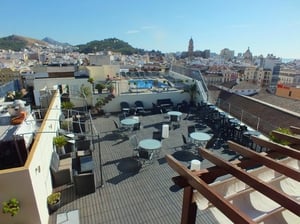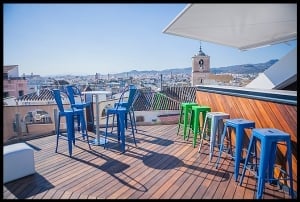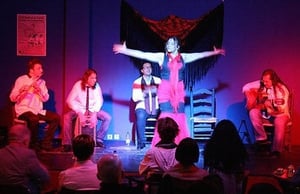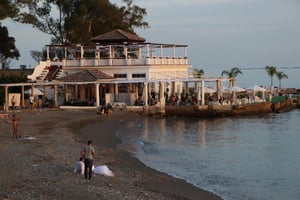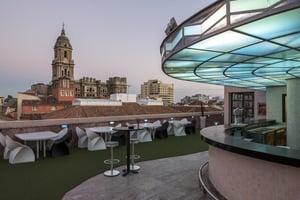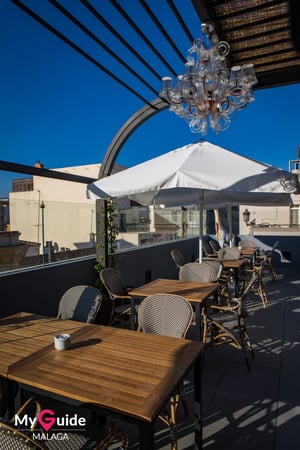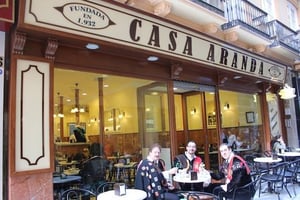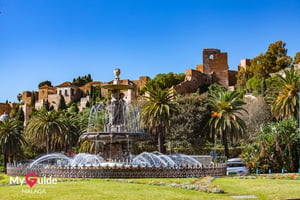Eastward bound by the beach
What to discover heading east along the seafront: La Malagueta, Pedregalejo, El Palo and El Dedo
Modern Málaga is a colourful, dynamic and varied organism. At its heart is the bustling and seductive old town and its impressive cultural monuments, the revamped Soho, and beyond, the more modern attractions, its retail and leisure parks, concert halls and exhibition centres to the West. However, if you head East, simply by walking or cycling along the seafront, you discover a Málaga that has clung on to its roots, its architecture and its neighbourly village social structures, while all around it is in flux, and the towns of the Costa drown in fresh concrete.
So pack a bag, a water bottle, and a camera, hire a bike or just walk, and head out along an uninterrupted pedestrian strip of nearly eight kilometres. It is a route that is leisurely, stunningly picturesque and takes in several iconic elements of Málaga life. A good starting point is from the Plaza La Marina in the centre. There are many bike hire businesses right there in Soho. If you decide to walk, it's not hard to find a bus to take you all the way back again.
You start very much in the twenty-first century, enjoying the design and landscaping of Muelle Uno, the refurbished harbour front. The views of the city from the end by the lighthouse are epic. It's smart, there's lots to browse, and some fun constructions in the gardens. It's great for a stroll anytime, but don't dally, for here, all is very much chain stores and franchise restaurants of a type and quality you'll find anywhere in Spain. And we are on a mission. Real Málaga is just the other side. Rounding the point by the lighthouse you get views along the jetty to the cruise terminal, where you'll likely see one or more of the floating hotel/shopping malls that ply the Med. Then in front of you is the great sandy arc of the Playa de la Malagueta. It's a generously sized beach with decent quality sand, relatively speaking, and is always full of activity. At regular intervals you'll find the essential eatery of the Malagueño, the chiringuito. This is a type of cafe restaurant on the edge of the beach. Every beach on the Costa has them, and they come in many guises, from the ostentatious to the very basic. Here on the Malagueta, they are straightforward cafes, often based in a wooden shed with a small terrace, where you can sit and take in the sparkling light of sea and sky, sip cold beers, and eat what is most typical of this institution: the espeto.

The humble sardine is speared on a wooden stake which is stuck into the sand up against the slow-burning logs of olive wood. There they cook and smoke and are served simply with lemon, typically accompanied by a salad and a cold beer. You'll see the little huts and stalls periodically all the way along this coast. But patience, for we are still in the centre of town, and prices of the espetos will drop considerably as you journey along. There are plenty of places on the Malagueta of all price and style, so take your time and take your pick, or wait to explore further. The Malagueta arc is long, nearly four kilometres and the halfway point of the trip is marked by Malaga's most iconic beach bar. This is much more than a chiringuito, it is the famous Balneario, Los Baños del Carmen. This strange dilapidated building is a surviving Edwardian sports pavilion and bathing terrace. It is miraculous it has survived the elements, and is regularly and violently inundated by storms during the winter, but still it stands, shabby and proud, offering a great open terrace and excellent views onto the city. It is one of the best spots to catch the sunset in Malaga, looking back onto the city and the sun sinking behind the mountains beyond. The food is excellent, and there's often live music. It's bustling, popular and a local favourite. It will eventually get redeveloped, but so far administrative torpor means that its old world charm is still alive and kicking.
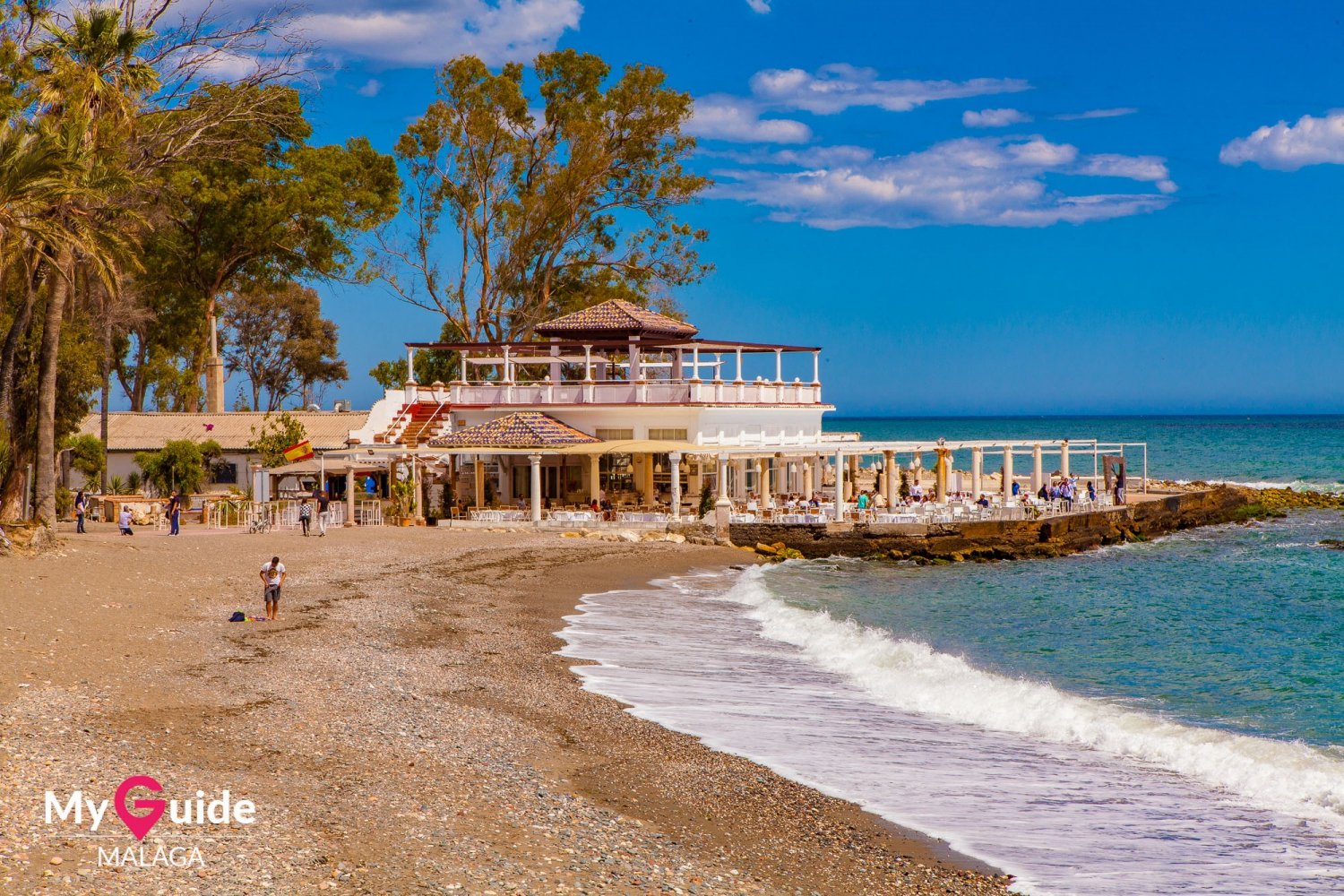
From here, take the pavement that runs by the main road for about 150 meters until you access the narrow streets of Pedregalejo. You will pass a still working boatbuilder, where the few fishing boats that still work off these beaches are repaired. Head for the seafront and enjoy a completely different feel to anywhere in the rest of Málaga. The beach is divided up into little bays protected by breakwaters. The pedestrian front is lined with little houses that have been built anytime in the last hundred years. There are plenty of cute cafes and bars, hip restaurants and places to hire stand-up paddleboards and bikes. It is remarkable that in the current day a stretch of frontline beach exists as it has for decades. It gives one an idea of just how most of the Costa del Sol once looked. Here and in neighbouring El Palo, you slip seamlessly into another time. Little shacks on the beach reveal the trailing blue smoke of the logs and sizzling sardines. From here on in you'll get the best value seafood prices in Málaga, with a surprise in store at the end. The 1200 meters of Pedregalejo are utterly charming, and its well worth ducking back down the tiny alleys to enjoy the two small streets that run along the barrio parallel to the sea. The sand of the beach is grey and gravelly, being composed largely of river silt washed down from the enormous mountains that can be seen just behind the town. Shortly you'll cross a suspension bridge over a gulley where storm waters wash down in the winter. This is the barrio and beach of El Palo. Here the seafront is a real mishmash of architecture, where families have thrown up little beach houses and businesses over the decades. It is full of cafes, bars, restaurants and ice cream shops. The price of an espeto here is as cheap as anywhere in the city. You can eat seafood pretty much everywhere here, and prices are all well displayed. There's no highrise hotels, in fact no hotels at all along here. It is a living neighbourhood that has existed for generations, which is clearly reflected in the seemingly chaotic building style and organisation. This is where the Malagueños come to eat, sunbathe, stroll and party, in the same way they have for decades. Life has another pace altogether here.
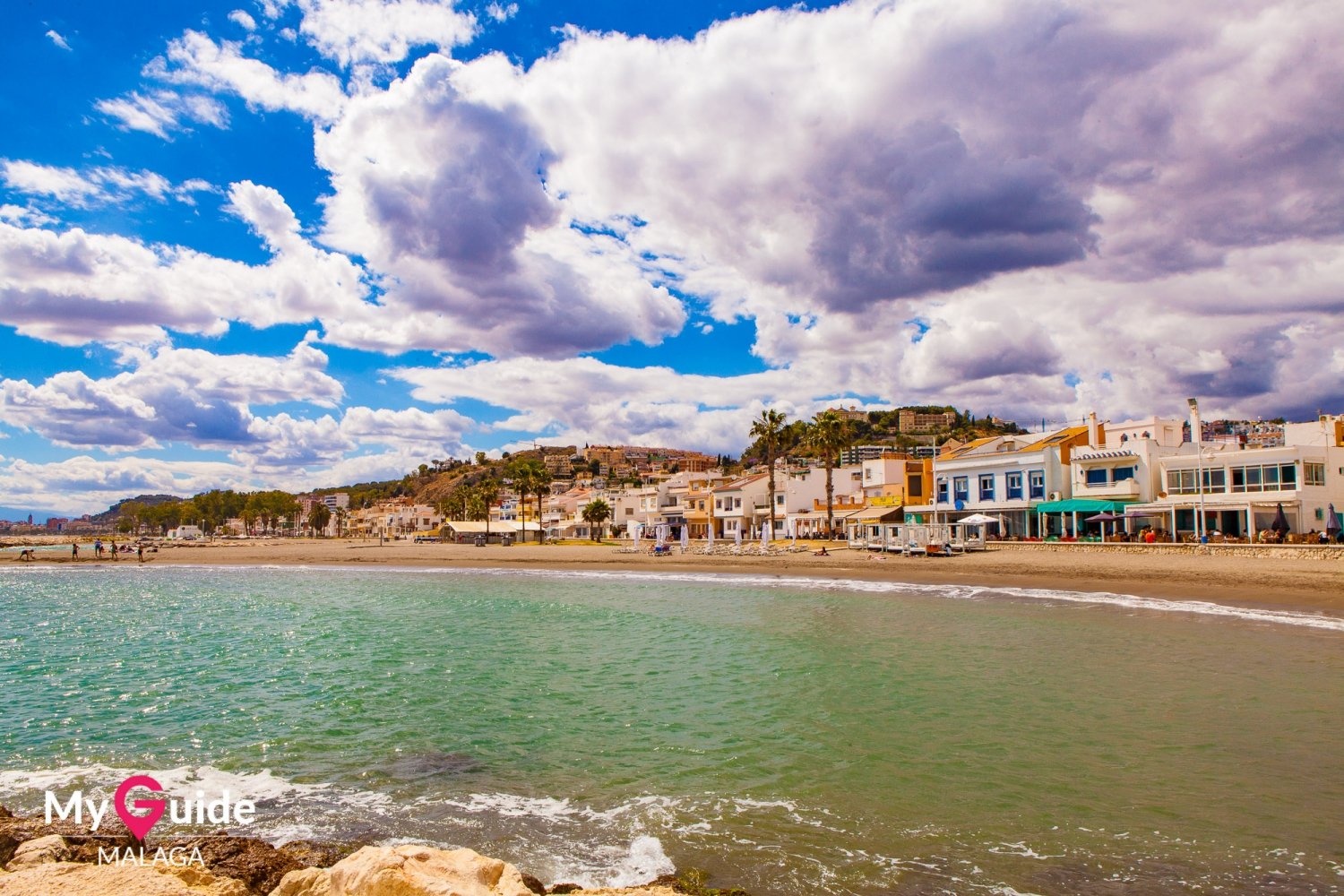
Crossing over another suspension bridge, you are on the final stretch of the Playa del Dedo. This section groans with famous old fish restaurants, and espeto huts are roasting away every twenty or thirty meters or so. The beach finishes at the Marina del Candado. The last establishment on the beach is probably Malaga's most famous restaurant, El Tintero. Its appearance may make you wonder why. It is a huge, basic cafeteria, with serried rows of plastic tables and chairs. But it's the way it functions that makes it so famous. From the enormous barbecue pits and kitchen friers, waiters appear loaded with trays of dishes of fried fish, seafood, meats and salads. They bark out the contents of the trays and you simply have to attract their attention and get them to deliver your chosen dish above the din and demand of others. It's probably the polar opposite of fine dining. It's fun dining.
There's still more to explore if you have time, in the alleys and market of El Palo. If you are taking a bus, head back to the suspension bridge between the two beaches of el Palo and El Dedo, get to the main road and take the number 11 back to the centre.



